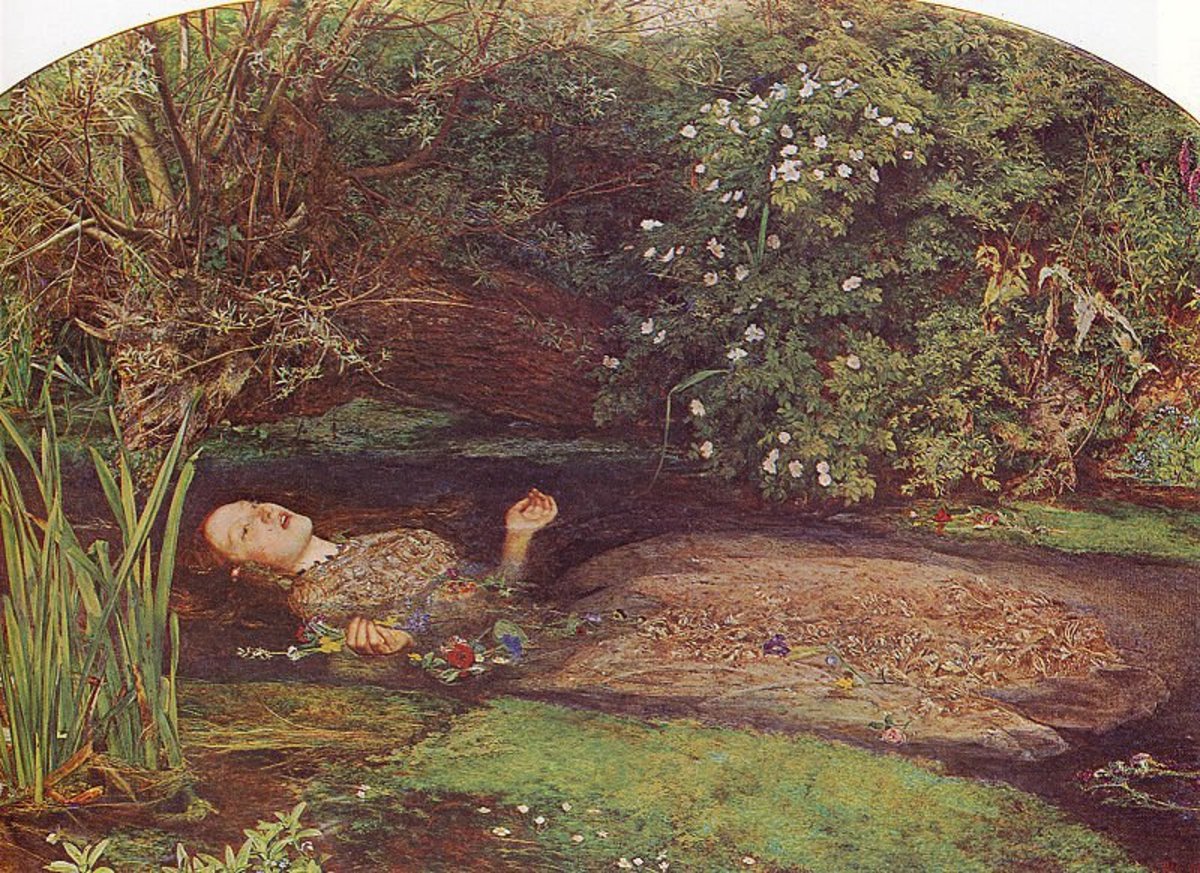Ancient Near Eastern Art
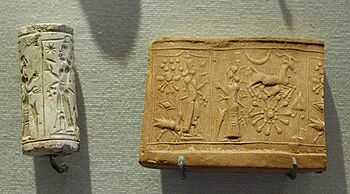
Background
The ancient near East consisted of five notable civilizations: the Sumerians, the Akkadians, the Babylonians, the Hittites, and the Persians. It's a well known fact that this, for lack of a better term, is where everything basically began. Writing, cities, organized religion and government, law, and even the wheel just to name a few of the Near East's achievements. It's difficult to argue the fact that this ancient civilization gave the world, and humanity, more then any other.
Royalty, and kings, quickly realized the benefits art really withheld. Artists had to capabilities to glorify the most wicked of rulers. They brought Gods' to life and imprinted stories on mortals hearts that would surely outlive even the strongest of generations. This is best known as the start of an eternities relationship between artist and viewer.
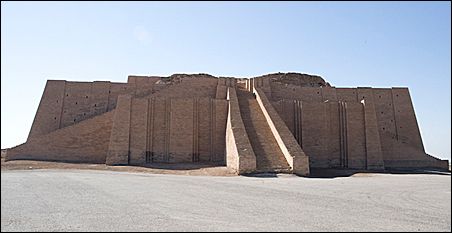
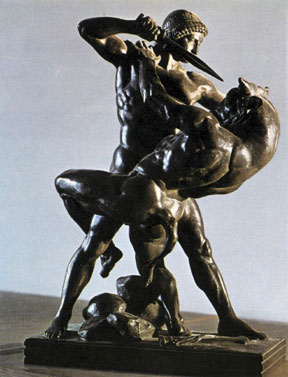
Moving from Prehistoric Life
The major difference between prehistoric and Near Eastern life was the Easts desperate desire to civilize. Therefore, architecture was greatly improved to withstand constant human habitation. Groups could now live, govern, and worship daily in these structures.
Innovations to sculpture also arose greatly. Comparing prehistoric life and Near Eastern life again, humans were not the central focus in prehistoric art. But more often then not, humans were depicted in Near Eastern art. Remembering Venus of Willendorf, prehistoric art exposed the human body with exaggerated sexual organs and no shame in nudity. Near Eastern sculptures were more likely to portray clothed humans with great anatomical precision. On top of that, prehistoric people were travelers, nomadic groups unable to carry heavy, over sized objects with them. But as the people of the Near East civilized and settled into land, the larger and grander the sculpture, the greater the sign of permanence.
The invention of writing also marked a great importance in art history. As people began permanently recording laws and taxes, they also began recording stories. The first written epic was, Gilgamesh, which was recorded upon stone tablets. The need for stories to be illustrated was a growing necessity.
Near Eastern art began a new tradition with painting as well. Representation of animals with human like body parts and emotions began emerging everywhere. The Sumerians began the tradition with the Lyre. It was continued by the Egyptian Sphinx and the Greek Minotaur.
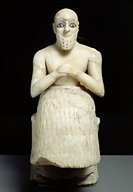
Sumerian Art
The Sumerians etched realistic humans doing everyday tasks. They used negative space under the arms and between the legs to create an even more realistic effect. Their statues eyes were always wide open, with nearly emotionless expressions. Men were bare chested, dressed only in kilts. Women's chests were always covered. Nudity was frowned upon in these civilizations, It was meant only for slaves and prisoners. Size expressed importance in Sumerian art. The largest and most centrally placed figure was the most important, and most often the king. This arrangement was called, and is now known as the hierarchy of scale.
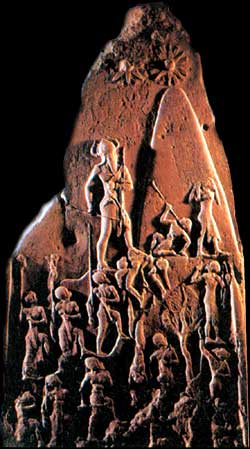
Akkadian Art
There was one major significant change from Sumerian to Akkadian art, which was the deification of the king, who did rule with the Gods' approval, just not their assistance. They had a large interest in creating permanent stone markers to show religious or civic sites, and even burial sites.
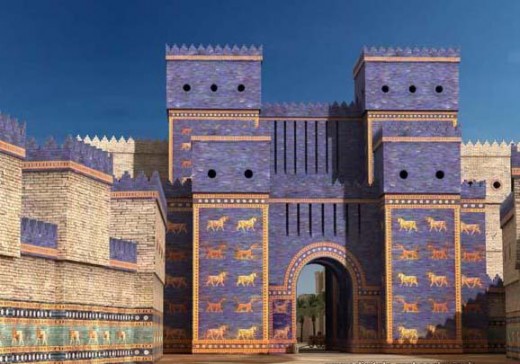
Babylonian Art
Nothing was spared in the extravagant decoration of Babylon, covered in it's well known seven wonders of the world creation, the hanging gardens. Some of the Babylonians art work contains some of the earliest law ever written. As a matter of fact, one of their more famous pieces, Stele of Hammurabi, there were over 300 laws carved into the work given directly from Shamash to Hammurabi.
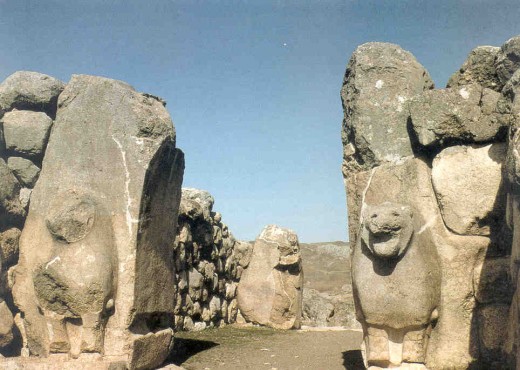
Hittite Art
Little is known about Hittite art, other then the fact that they preferred using stone over mud-brick.
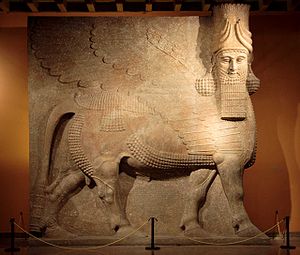
Assyrian Art
Assyrians praised the glory of their kings, and his capibilities to kill and destroy. Humans remained solomn as animals were the creatures that showed emotion. Lions would cry out in pain or fear. This expressed the authority of the king.
Cunieform shows up everywhere in Assyrian art. Words were often carved over people or scenes. Shallow relief sculptures were also an Assyrian specialty.
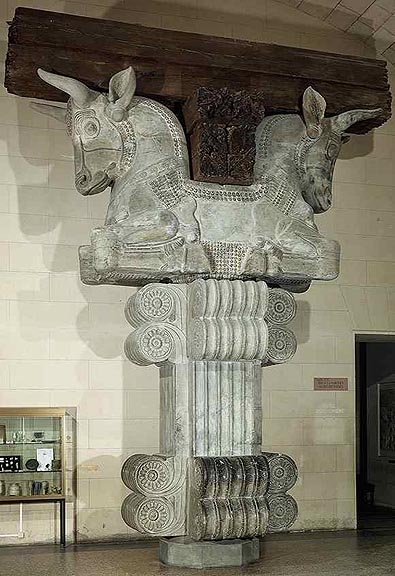
Persian Art
According to the history books, Persia was the largest empire the world had ever seen during this time. The persians made it their goal, being the greatest empire of it's time, to erect some of the most monumental and unbelievable art of its time. They created extravagant architecture, huge audience halls, massive buildings, and much much more.
Persian art is noticed as architecture held up by two "bull capitals" holding wooden roofs.




